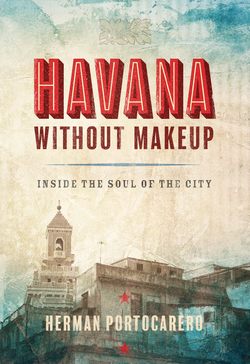Читать книгу Havana without Makeup - Herman Portocarero - Страница 7
На сайте Литреса книга снята с продажи.
ОглавлениеPREFACE
LA HABANA, DECEMBER 16, 2014
This is a special evening.
The faithful of Cuba’s Santería religion are getting ready to celebrate the Night of San Lázaro. San Lázaro is the patron saint of the sick and those who suffer, the poor and the oppressed. Thousands will converge upon the sanctuary of El Rincón outside the capital, many doing penance by undertaking the long trek on their knees, or carrying a heavy stone on their shoulders. More often vibrant and celebratory, dancing to ecstatic African rhythms kept intact from the era of slavery, for one night Santería moves closer to the sinister and masochistic aspects of Roman Catholicism – seeking redemption through self-punishment, recognizing suffering as an essential aspect of the human condition.
Spiritists and seers, carrying images of the saint and his African equivalent Babalú Aye, roam the streets of the poor barrio of Jesús María in Old Havana. A grandiose puppet on stilts, dressed in the purple associated with the saint, parades through the neighborhood.
Is there something else in the air? At this same moment, in the small Jewish community in Vedado, preparations are underway to celebrate Hanukkah. It is hoped this could be an auspicious date for the release of Cuba’s most famous prisoner, U.S. citizen and alleged spy Alan Gross. Gross brought sensitive computer and communications equipment to Cuba as a subcontractor of a project paid for by the U.S. government. He was accused of subversive activities, arrested in Havana in December 2009, and sentenced to fifteen years’ imprisonment in March 2011. The Beth Shalom community has been caring for him. For several years his imprisonment has been a constant hurdle to improved relations between Cuba and the United States.
The omens are good. And in spaces as mysterious to mere mortals as the abodes of the saints and the African spirits we are trying to please and to placate, history is being made. Both in the White House and in the Palacio de la Revolución, final versions of groundbreaking speeches by the U.S. and Cuban presidents are being checked. By late morning on the 17th, when the candles for San Lázaro have guttered out, and Hanukah is underway, Alan Gross will be on a homeward bound plane. In a reciprocal gesture, the United States will also liberate three Cubans still serving long-term sentences for alleged espionage, the remaining three of the Cinco Prisoneros del Imperio who were at the center of Cuban activism for almost twenty years. By midday, Cuba and the United States will have announced that they are burying half a century of tropical cold war. In the real Havana these announcements were met with tears of deep joy, in a rare, spontaneous outpouring of collective emotion.
In the pages that follow, we will try to explain how the Havana of that morning became who and what she was, is – and remains. We will do so mostly away from the predictable pitfalls of entrenched political positions, concentrating instead on the deepest roots of the city and her people. A small dose of politics is unavoidable here and there, but we will always remain conscious of the real subject: the complex soul of a unique city. We will explore it gradually. Whenever a term or a fact may seem mysterious at first, we explain it later. This is a rambling walkabout, please enjoy it as such.
Santería throne for Ochún set up on the eve of San Lázaro: sweetness next to suffering
